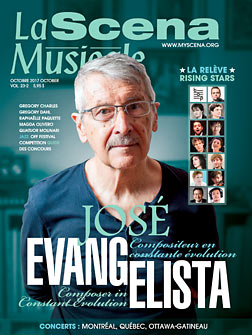
This page is also available in / Cette page est également disponible en:
![]() Francais (French)
Francais (French)
Having had the honour of presenting this great lady was one of the memorable pleasures of my years spent at the Metropolitan.”
– M. Chapin
Following my first article on Magda Olivero, I would now like to relate my adventure through the various stages that allowed me to better understand the Olivero phenomenon. After recording the performance of Adriana Lecouvreur in Hartford in 1969, I decided to pursue my idea to record and archive all her performances. So I joined her in Dallas where she sang Fedora in Giordano’s opera of the same name, and a second recording was added to my list. This was soon to increase because I decided, after Dallas, to continue my project in Italy. I took the same plane with her to Milan. Arriving at Malpensa airport, she invited me to share a car with her and her husband, Aldo Busch, an engineer of Swiss origin. We developed a pleasant friendship; I would henceforth be their guest at all the operas in which she took part. I had become more than her groupie and was now her collaborator, almost her confidant.
In December 1969 in Livorno, I attended a second Adriana, then I Quatro Rusteghi by Wolf-Ferrari at the Teatro Nuovo in Turin. In January 1970 it was Mascagni’s Iris in Piacenza and Poulenc’s La Voix humaine sung in Italian: La Voce umana, at the Teatro Regio in Parma. In May, at the Maggio Musicale Fiorentino, she accepted a rather unusual proposal: the triple role of a palm reader, a card reading psychic, and an astrologer in Henri Sauguet’s opera La Voyante. This was the first time that Magda sang a complete opera in French. Henri Sauguet, who conducted, wrote to Magda: “Thank you a thousand times and congratulations with all my heart. Your author and grateful admirer.”
That same year, in June 1970 in Amsterdam, things were a bit harried during a performance, in concert version, of Cherubini’s Medea at the Concertgebouw. Magda had found a very good seat for me in the center of the first row of the mezzanine. Confident, I installed the two microphones on the railing. I could hardly be better placed to record. Everything went smoothly. Magda had just triumphed in Medea, one of the most complex roles in the repertoire. When the opera was over, as I put away my equipment, I felt a tap on my shoulder from a security guard. Politely he asked me to hand over the tapes I had just made of the recording. I acquiesced in this request … if I dare say. I made a little show of searching through my storage bag, then straightened up and gave him two blank reels. He left satisfied. The Amsterdam Medea was saved.
One last adventure and not the least: Magda’s debut at the Metropolitan Opera of New York in the role of Tosca. The fact that Magda had never previously been invited to sing at the Met was, according to opera lovers, an unforgivable omission. To the Met’s administrators, Olivero was a “has been”, a singer of the 1930s. The credit goes to Marilyn Horne for approaching Schuyler Chapin, then director general of the Met. After seeing Olivero in Tosca in Dallas, Marilyn Horne, overwhelmed, was quick to share her experience with Chapin. “Who, Magda Olivero?” replied Chapin. “But she must be 65 years old. How can she possibly sing and play Tosca?” After Horne defended her point with a detailed analysis of Olivero’s style and technique, he decided to hire her for three performances. Magda’s debut in Tosca was to take place on April 3, 1975. And Chapin was later to write: “Having had the honour of presenting this great lady was one of the memorable pleasures of my years spent at the Metropolitan.”
The hall is packed to the rafters and all of New York is present: fans, critics, and stars like Zinka Milanov, Regina Resnik, Evelyn Lear. Other celebrities come out of curiosity, some even incognito.
The opening curtain rises on the Attavanti chapel. After her off-screen “Mario, Mario, Mario,” Tosca appears, greeted by the screams and applause of the audience. She is racy, proud and ageless. The voice is in good form and resonates remarkably in this huge hall of 4000 seats.
In the Second Act, having been thrown on the couch by Scarpia, Tosca stretches out, her head thrown back, and begins to sing her only great aria of the opera, “Vissi d’arte.” Magda concludes this prayer by asking God why she is treated this way. In a voice both imploring and powerful, she throws a final “così” that enflames the room. The crowd rises, delirious. In the face of this outburst, which seems unwilling to end, Magda, who does not expect such a frenzy, remains motionless, surprised and obviously moved. It is a record ovation in the history of the Met, a full 22 minutes, almost as long as the 30-minute ovation at the end of the Act III.
She later told me about the unreal situation in which she had found herself. After the “Vissi d’arte,” not knowing when the applause would end, she held to the custom of keeping the singer’s position. She dared not move because at any moment the orchestra might resume. And the second act was far from over. At the intermission, a feverish and euphoric audience wondered whether they had really lived these intense and fabulous moments, a unique evening in the history of opera. Walter Legge, producer of almost all of Maria Callas’s recordings and Elisabeth Schwarzkopf’s husband, said, “I have no doubt, she is the Duse1 of the opera.”
In Act III, when Tosca and Mario are finally free, she tells him that she has killed Scarpia, “Io quella lama gli piantai nel cor” (“I planted this blade in his heart.”) A tense moment for the voice, for the soprano must support a high C on “lama” and immediately descend into its lowest register to finish on “nel cor.” Opera-lovers, knowing the anguish of the soprano at the approach of this perilous passage, await the accursed phrase. Here Olivero throws the murderous sentence with such assurance and strength that throughout the hall one feels the power of steel penetrate the depths of the man’s heart.
Finally, after Tosca throws herself over the parapet of Castel Sant’Angelo, the curtain falls on the last act. The crowd keeps calling “Magda, Magda”: 32 bows that last half an hour, a record in the annals of the Met. New York critic Harold C. Schonberg writes: “By the yells and screams of the opera buffs, one would have thought that a combination of Tebaldi and Callas was making her debut.”
Following this immense success, the Met in 1979 proposed to Magda Olivero, 69 years old, to undertake a tour of seven performances of Tosca with Luciano Pavarotti. The tour, organized by the Metropolitan Opera, went to cities across the United States. These Toscas were Magda’s last, and Pavarotti was her final Mario Cavaradossi.
When I think of this Tosca at the Met, I try to explain where this passion came from, that was unleashed in every performance by Magda Olivero. I could always invoke the flexibility of her voice, her superb phrasing, her perfect diction, her impeccable legato, her dramatic instinct … But what else? She admitted that her voice was not beautiful in the sense of pure beauty, but that it was at least expressive and disciplined. And here Magda must explain, in her own French:
“Voice is only 40% of an opera performance, the other 60% consists of innumerable intangibles. When I sing, I do not think to sing, but only of the character and live the scene. Of course, to do this, we need a vocal technique that is totally tested, otherwise it is impossible. Never say ‘Oh, now I have to prepare to reach this high note.’ No, no, the voice must be there automatically before venturing to perform what the composer asks for. The technique must always be at the service of the character and disappear completely in front of the dramatic situation. Where I really feel my full measure on stage, it is by acting more than singing. During my years of training, the Duse had a lot of influence on me, I read everything on her, examined her photos and especially studied the gestures of her hands. Because to me, after the voice, it’s the hands that express emotions the best.”
I asked her how she was preparing for a new role.
“First, I begin by studying the character in her social and environmental context. Then I try to understand the personality of the heroine, what happened in her life, because it is very different and often foreign to my own reality. During the whole month of preparation, I feel ill, a discomfort that comes with me day and night. During the day I learn text and music; during the night, my subconscious takes over and assimilates the character. And then one morning I wake up and say ‘buon giorno’ to the new person who henceforth lives in me. On the day of the performance, I am no longer really myself. I go to the theatre several hours before the curtain rises and I take advantage of these peaceful moments to unite myself to this person to whom I will give life. Just at the moment of entering the stage, when the orchestra begins to play, there is a kind of subtle energy that invades me. I’m as in a trance, there’s no more Magda Olivero, no more technique. All that remains is the music and the character. Joys, sorrows, sufferings and very often death become extraordinary experiences. When Adriana, Manon, Violetta, Cio-Cio San die, I die too, and I can say that after having died so often from poisoning, exhaustion, sickness, suicide, I know what it is to die. This is certainly the reason why after a performance, I am like a convalescent and in the days that follow, slowly, I become again myself. It is a true resurrection from which I am enriched. And that’s why I still sing.”
As we have seen, Magda Olivero began to sing at an early age; it was in her, she had a voice that carried, but when she began more serious musical studies, her teachers told her that with this voice she had no chance of making a career. A little discouraged but still determined to persist in this way, she sought out a teacher who could help her. This she found in the maestro Luigi Gerussi, the only one who dared to say the opposite of his colleagues and take her as a pupil. She recounted the long years spent in mastering and perfecting a difficult voice; a rather thin voice with an extended range and a tight vibrato. With time and effort, her voice became round while maintaining its agility, the vibrato gained amplitude and her range, maximum ease: a dramatic bottom, an expressive middle, and a top able to reach the F above high C.
Finally ready, Magda made her debut at La Scala at age 23. From 1934 onward, the company profited from her immense talent as an actress and singer. She was the great star of the 1930s in Italy and the favourite interpreter of the composers of the so-called “verismo” school. In 1939, the year she made her debut in Adriana, she sang in more than 60 performances. At the same time she added 6 new roles to the 36 already in her repertoire, a total of 42 roles learned in only 6 years, almost as much as Callas and Tebaldi in their entire careers. On her return from a Berlin tour with the Rome Opera troupe on June 19, 1941, she married the man of her life — and decided to end, abruptly, her prestigious career of almost 10 years.
During those early years Olivero participated in the first complete recording of Turandot in 1938; she sang Liù with Gina Cigna in Turandot and Francesco Merli. In 1940 she recorded eight 78-rpm recordings, including the famous “Strano! … A fors’è him … Follie, follie … Semper libera …” from the first act of La Traviata. That recording won Magda Olivero the “Oscar del Disco” award in 1965. In another comparison, organized in 1969 by the magazine Discoteca and the famous vocal art specialist Rodolfo Celetti, the aim was to bring together and hear all the existing recordings of this great Violetta aria and choose the best performer. Again, Olivero won the award. The list of artists included prestigious names: Tetrazzini, Capsir, Tebaldi, Callas, Sutherland, Moffo, Scotto, Zeani …
In 1953 she returned to the studio to record five new 78s of famous arias, including the moving “Amami Alfredo” of Act II of La Traviata; it is one of the arias that she was often asked to sing as an encore. It was not until 1969 that Decca offered her a contract for a complete recording of Giordano’s Fedora and excerpts from Francesca da Rimini of Zandonai. In 1993 Magda entered the studio for the last time to record an abridged version, with piano, of Adriana Lecouvreur. Of all the operas that she most often sang, Adriana and Traviata came first, with 114 and 102 performances respectively. If we take stock of all her recordings, there are two complete operas, a score of studio-made 78s, and a large collection of “Live” recordings, including a hundred full operas and 40 concerts and recitals.
In 1996 I wanted to offer Magda and her fans an anthology, in CD format, of the best moments of her career. I already had my recordings made in theatres, but my collection was far from complete. Having presented my project to Magda, she graciously offered me all the audio archives she possessed: many “live” broadcasts made in Italy by RAI, and others made in Holland in collaboration with the Concertgebouw of Amsterdam. I spent thousands of hours listening and sorting through them in preparation for the project. Listening to the first CD of my anthology, “Magda Olivero in Concert” on the FanClub label, Magda told me: “Now I can understand the reason for those passionate outbursts when I sing.” It was the first time she heard her own voice reproduced with such quality and fidelity.
Why so few studio recordings and so many “Live” recordings? First, I would like to say that the recordings made in the studio do not do justice to the voice of Magda Olivero, because the technique that allowed her to sing beyond her imperfections is based on an irreproachable mastery of the breath supported by a strong musculature in the diaphragm and a judicious control of resonances and harmonics. To record the voice of Olivero favourably, so that this voice can really flourish and realize its full potential, it needs the acoustics of a room. Also it is imperative to place the microphones as far as possible from the source, as in the middle of the room. If the microphones are too close, as is the case in the studios, the voice will not necessarily be to his advantage. I speak from experience because, having in my possession the most important collection of recordings of Magda Olivero and being the one who probably recorded her the most, I can confirm that after having studied and analyzed all her recordings, it is always those that have been made in theatres that really do justice to her voice. But even then, as she said herself, the voice is only 40 per cent. To truly live the Olivero experience and enjoy the other 60 percent, we had to see her live on stage and let us live the character with all the intensity of her dramatic play.
This passion for singing and the theatre that she shared during her 60-year career, Magda shared it for the last time in 2009. Always listening to this inner voice, which this time whispered to her: You must sing “Paolo datemi pace!” from the opera Francesca da Rimini. At 99 years, in front of television cameras, she offered a final moving testimony of love and peace.
Magda Olivero passed away in Milan on September 8, 2014, at the age of 104.
1 Eleonora Duse, or simply Duse, a great Italian actress, rival of Sarah Bernhardt
She is considered one of the greatest actresses of her time.
This page is also available in / Cette page est également disponible en:
![]() Francais (French)
Francais (French)









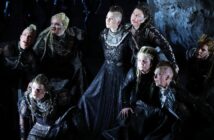

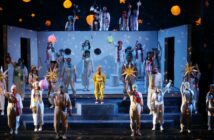


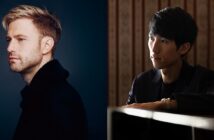
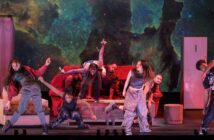

2 Comments
Dear Mr Robert, thanks for this moving article on this opera sacred monster. On thing is not clear though to me. You mention a “Magda collection” that should contain 12 CD, but I can only find the first one on internet. Found many recordings though of poor sonic quality but nothing as good as those Amsterdam recordings.
Thank you for your comments. It is true that good quality recordings of Magda Olivero’s art are not easy to come by, that was precisely my objective when I released “Magda Olivero in Concert” the first CD of a prepared collection of 12. Unfortunately the 11 succeeding ones never had a chance to make it to the market, too difficult to find a dedicated and honest distributor. I still have a few original sealed CD of the first release for sale.
Contact: [email protected]